Third Party Logistics (3PL) Software is a specialized software solution designed to help third-party logistics providers manage and optimize the various functions involved in logistics and supply chain management on behalf of their clients. 3PL providers typically offer services such as warehousing, transportation, inventory management, order fulfillment, and distribution, and they require robust software to handle these complex tasks efficiently.
Discover the top 11 best Third Party Logistics (3PL) Software
Cartoncloud
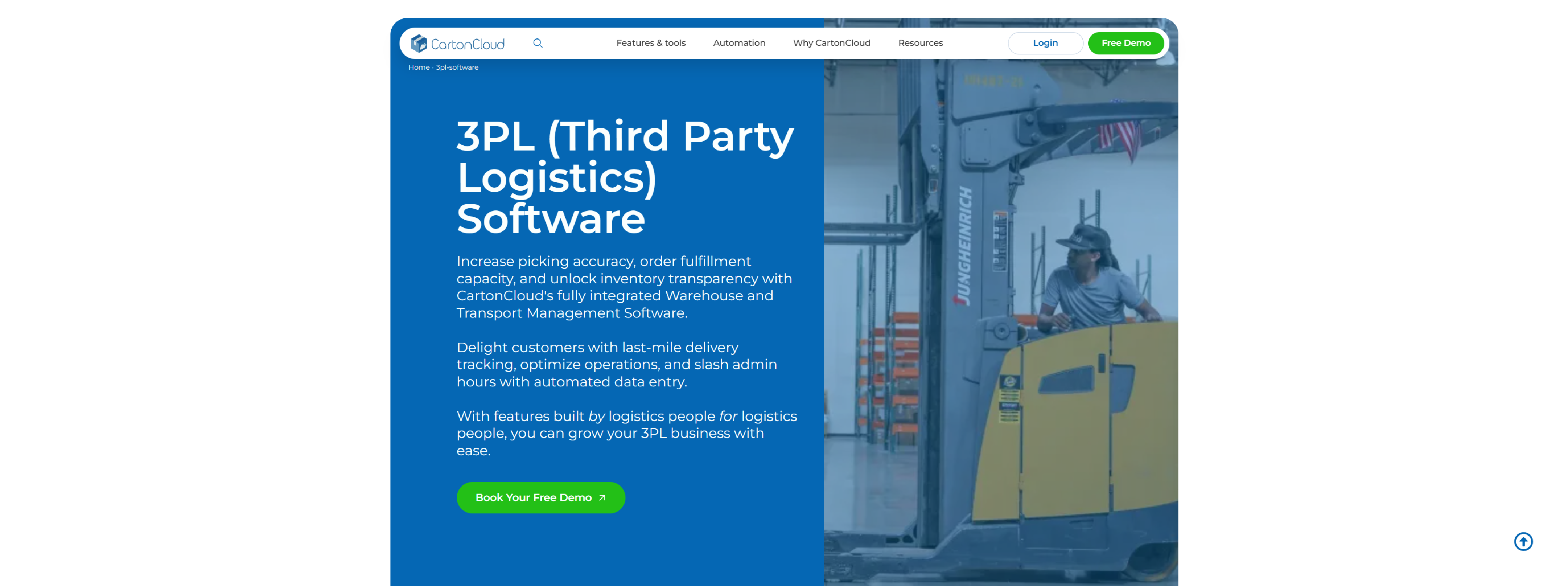
Australian owned CartonCloud is a feature rich Logistics Management Software with a powerful mobile Logistics App that includes both a 3PL Transport Management System (TMS) & 3PL Warehouse Management System (WMS) that’s easy-to-use and is focused on automation and mobility.
- Integrated TMS & WMS
- 3PL Mobile app
- Complex rate cards
- Cross-docking
- Tablet-friendly 3PL software
- Barcode Scanning
- Deliveries & Consignments
- Expert local support
Mintsoft

Mintsoft’s 3PL warehouse management system that puts your customers at the heart of your operations.
- Keep track of multiple customer’s stock
- Keep track of invoiceable activities
- Keep up with client queries
- Increase staff productivity
- Seamless integrations, out of the box
3plsoftware
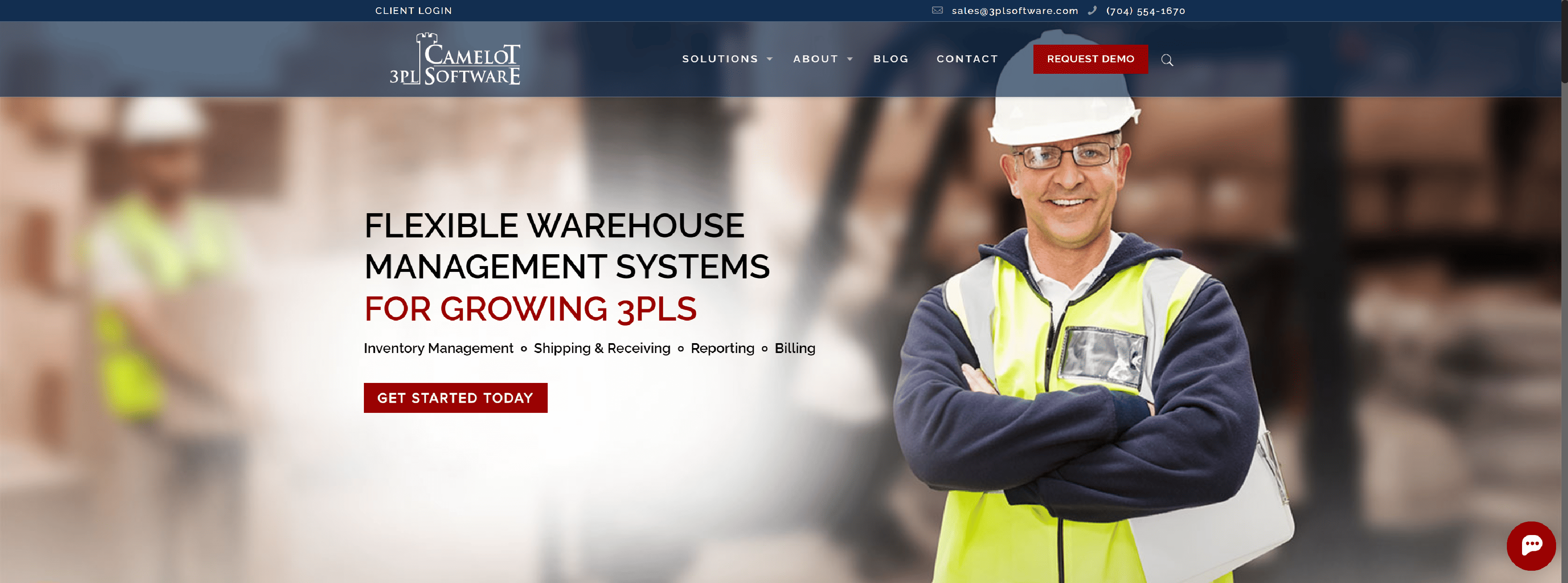
Camelot 3PL Software provides Warehouse Management Systems (WMS) exclusively to 3PL warehouses to manage and streamline their operations.
- Inventory Management
- Reporting
- Infrastructure
- Shipping and Receiving
- Billing and Invoicing
- User Interface
Neurored
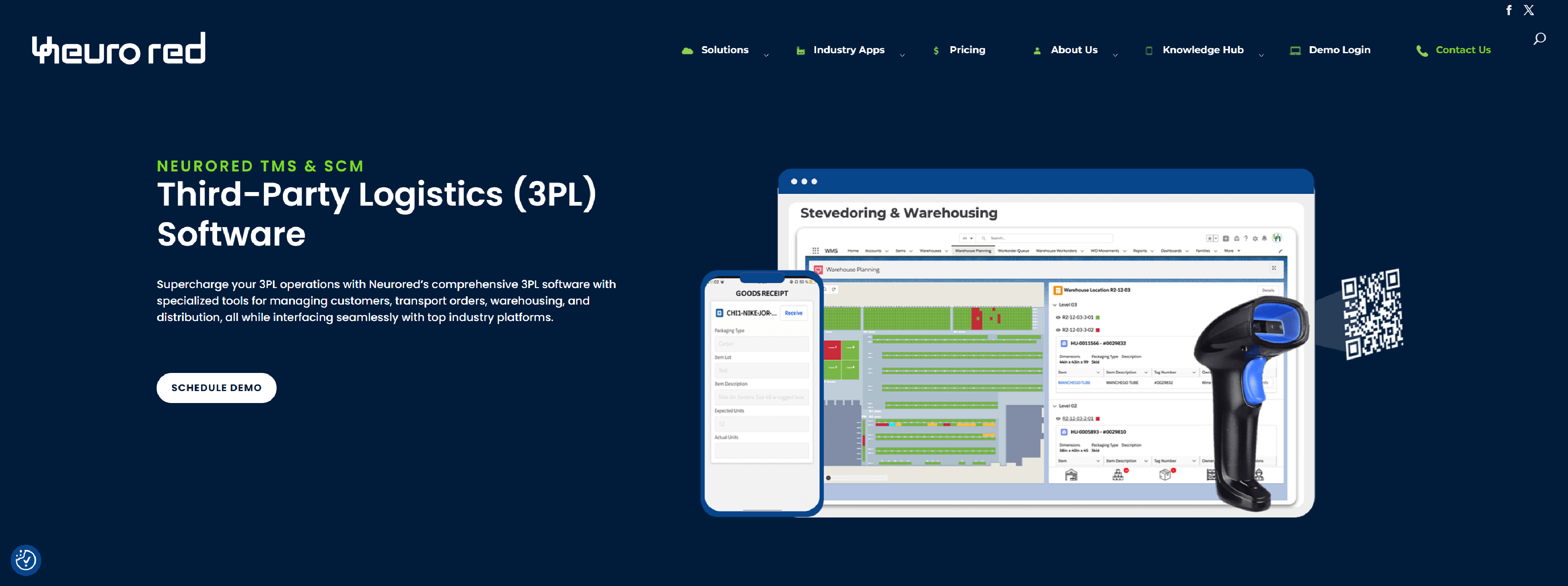
Supercharge your 3PL operations with Neurored’s comprehensive 3PL software with specialized tools for managing customers, transport orders, warehousing, and distribution, all while interfacing seamlessly with top industry platforms.
- CRM features for Third Party Logistics
- Warehouse Management Software for 3PL Logistics
- Order Management Software for 3PLs
- Pick, Pack, and Shipping Management for 3PLs
- Docking and Dispatch Management Software
- 3PL Freight Tracking Software
- Customer Portal for 3PL Logistics Management
- Fully Integrated Third-Party Logistics Software
- 3PL Management Dashboards & Analytics
- One Stop Solution for Transportation & Logistics
Softeon

Softeon – Third-party logistics seamlessly integrate into your supply chain; it is designed to optimize every facet of warehouse processes.
- Lack of flexibility to configure the 3PL systems to meet new or prospective client requirements
- Too much time and difficulty on-boarding new clients
- Too many disparate systems to cover all needed vertical industries and/or both large and small clients
- Lost revenue from the inability to capture all chargeable services
Transvirtual
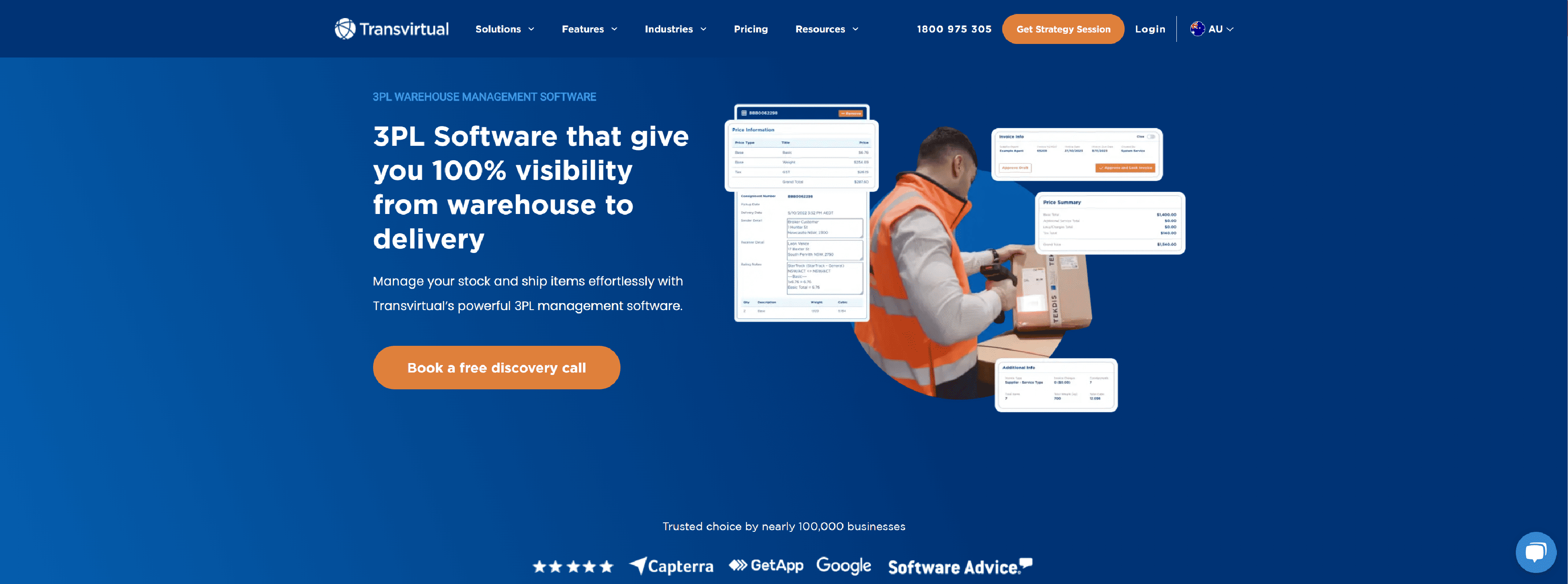
Manage your stock and ship items effortlessly with Transvirtual’s powerful 3PL management software.
- Connect your WMS and TMS with ease
- Streamline order processing with electronic data interchange (EDI)
- Optimize your warehouse space
- Save on costs and free up warehouse space
- Load your rate cards and auto-calculate invoices
- Optimise routes, record PODs
Magaya
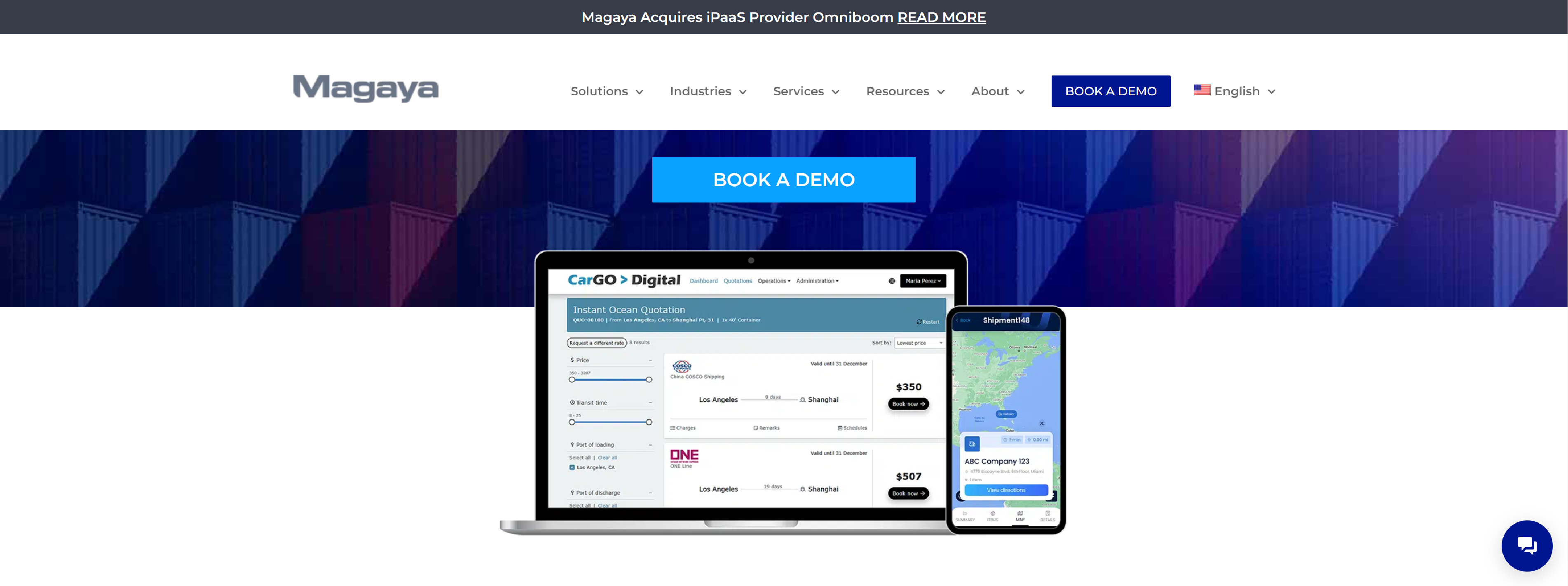
Magaya offers a complete 3PL software solution for shipping, warehousing, accounting, tracking, connectivity, and compliance.
- Enjoy Clear Skies Ahead With 3PL Cloud Software
- Grow Your 3PL Faster With the Magaya Network
- The Secret to Maximum 3PL Warehouse Productivity
- Take Your 3PL Business Further With Extensions and Integrations
Katanamrp
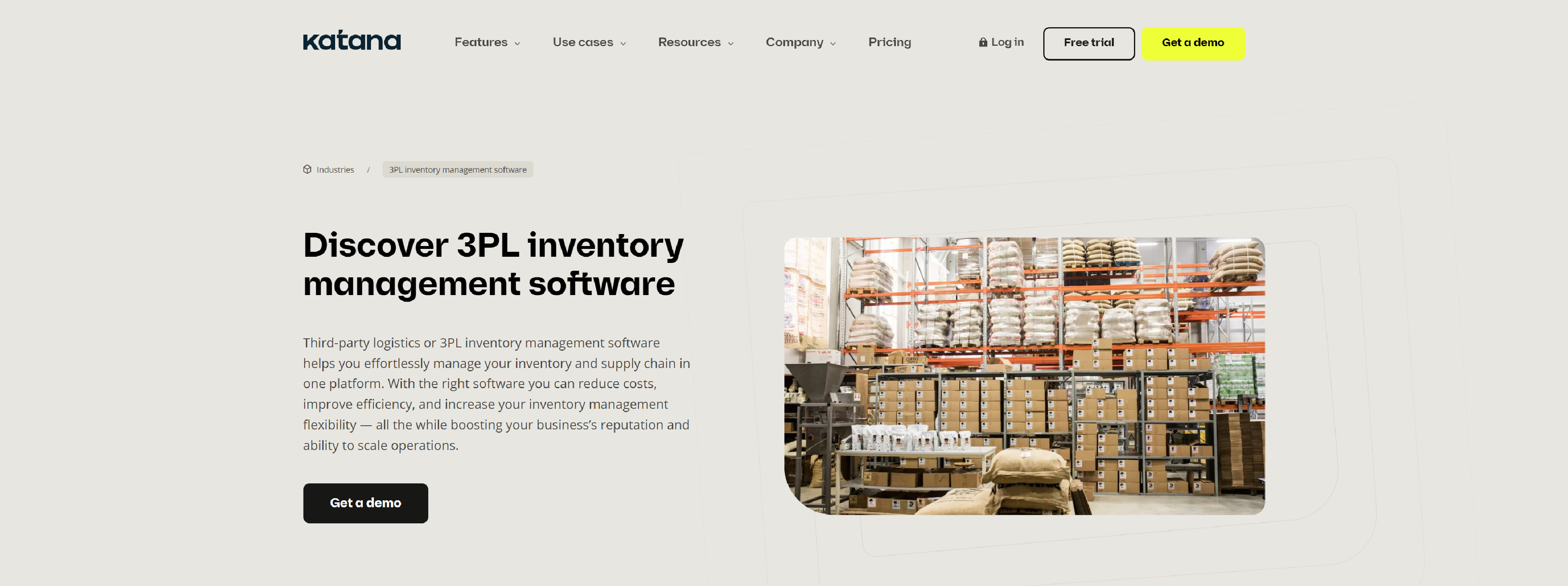
Katanamrp – Third-party logistics or 3PL inventory management software helps you effortlessly manage your inventory and supply chain in one platform.
- Eliminate stockouts with Katana
- Easily manage incoming orders from all your sales channels
- Track products available for sale
- Plans starting from $179 / month
- Annual and monthly billing options
- Add users and warehouses as you grow
3plnext
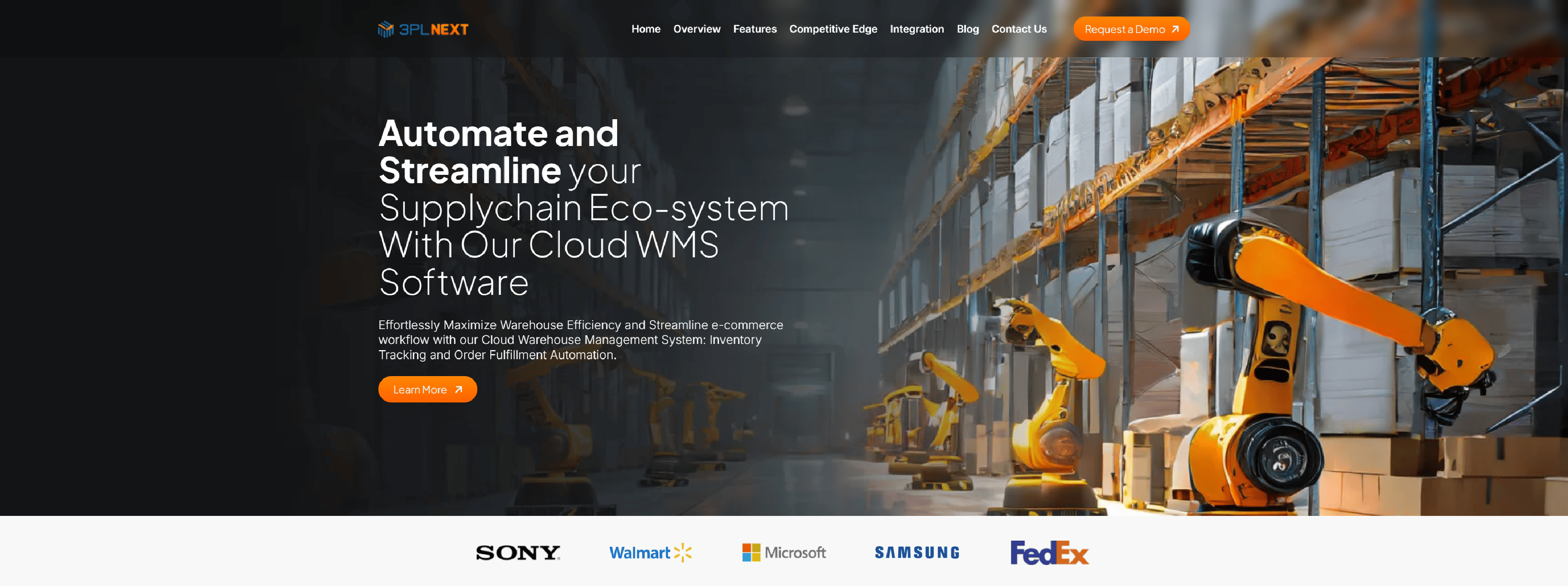
3plnext – Unlock the benefits of 3PL software and Cloud WMS integration, enabling you to efficiently manage your warehouse and enhance your supply chain operations.
- Feature-Rich Paperless Warehouse Dashboard
- Integrated E-Commerce
- Reporting for Improved Performance
- Automated Supply Chain Eco-System
Argosoftware
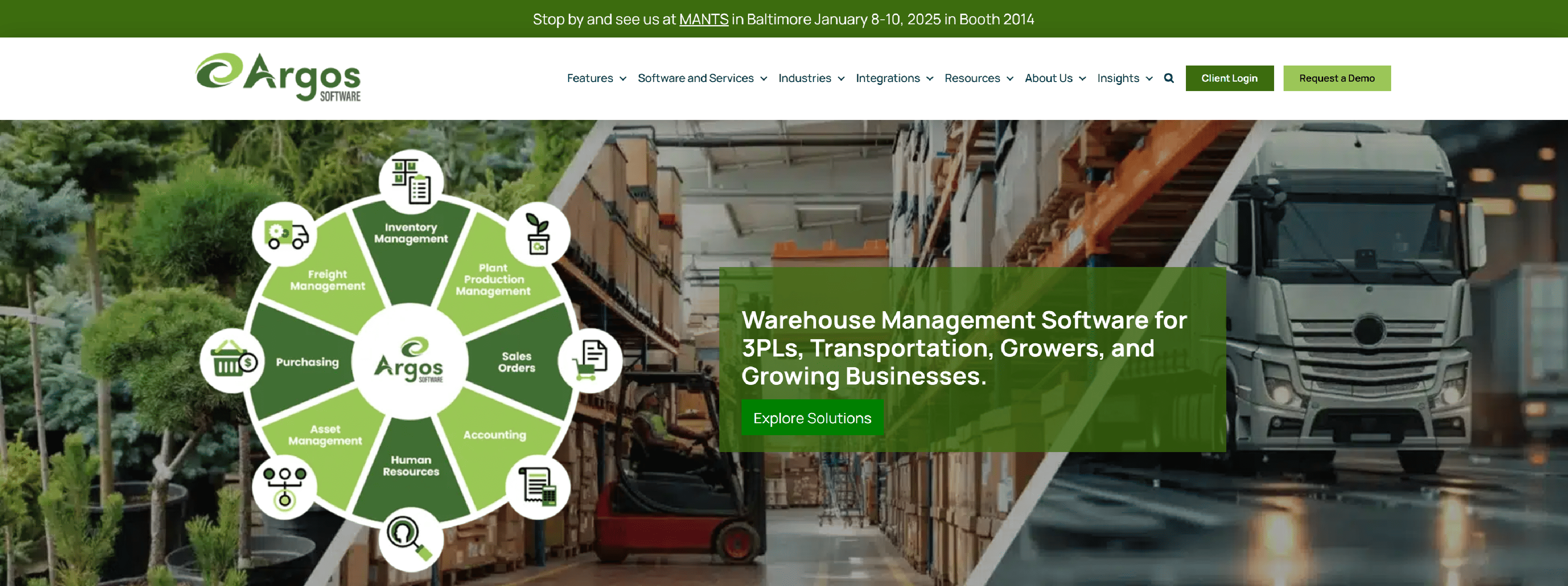
Argosoftware – Leading 3PL software provider offering robust warehouse management solutions tailored for third-party logistics.
- Activity Billing
- Client-Centric Management
- Real-Time Shipment Insights
- Expandability
- Seamless Integrations
Deposco
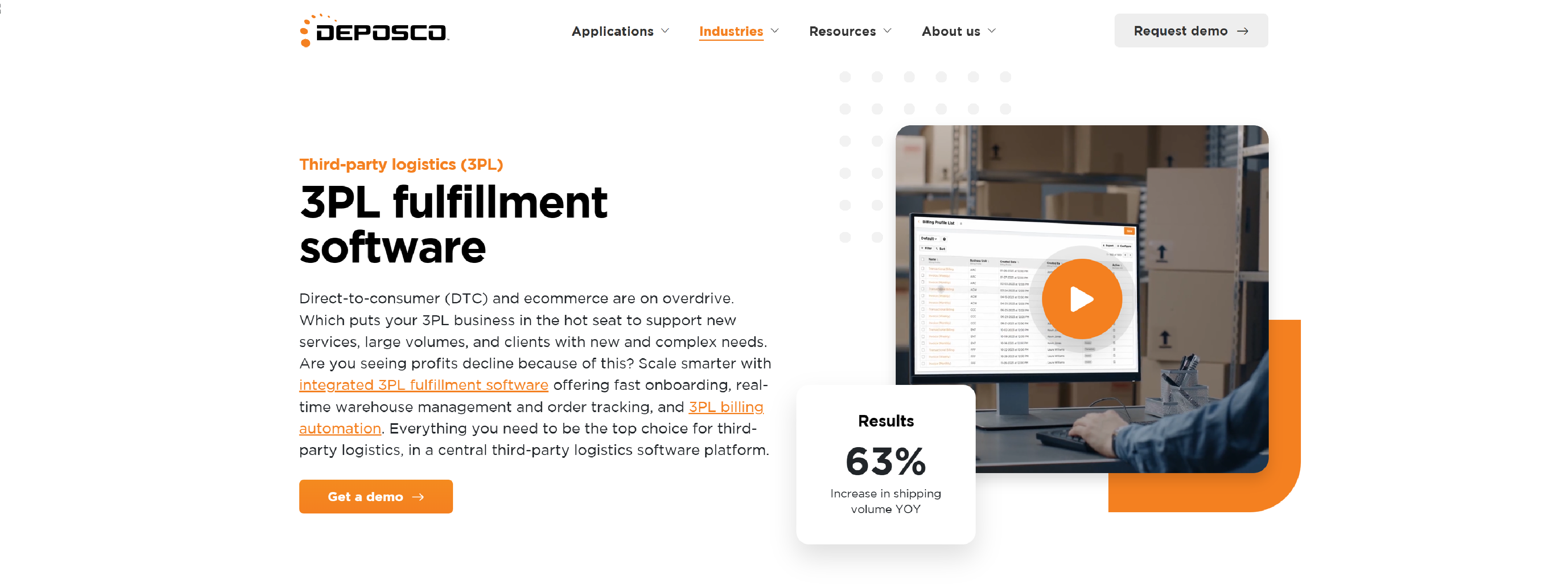
Deposco 3PL software is an integrated WMS and OMS platform that simplifies onboarding, client services, and 3PL billing tasks so you can grow beyond your limits.
- Cloud-native system
- API integration
- Real-time inventory and order visibility
- Self-sufficient onboarding of new clients
- Custom packing slips and kitting
- Retail label SOWs
- Rate shopping
- Export customer invoices direct
- Comprehensive EDI support
- SSCC compliant retailer labels
What is 3PL in WMS?
In the context of Warehouse Management Systems (WMS), 3PL stands for Third-Party Logistics. This refers to the outsourcing of logistics and supply chain functions to a third-party provider who manages all or part of the warehousing, inventory, and distribution processes on behalf of the company.
When integrated with a WMS, a 3PL provider uses the system to manage operations such as:
- Inventory Control: Ensuring that stock levels are accurate, and products are stored properly within the warehouse.
- Order Fulfillment: Picking, packing, and shipping orders to customers based on real-time data from the WMS.
- Shipping and Receiving: Managing the movement of goods into and out of the warehouse, including logistics coordination with carriers.
- Reporting and Analytics: Providing detailed insights into inventory levels, order status, and warehouse performance.
What is 3PL WMS Software?
3PL WMS Software refers to a Warehouse Management System (WMS) designed specifically for Third-Party Logistics (3PL) providers. It is a specialized tool that enables 3PL companies to efficiently manage warehouse operations on behalf of their clients. These logistics providers offer services such as warehousing, inventory management, order fulfillment, and transportation, and they often manage multiple clients’ operations within the same warehouse space.
Benefits of Third-Party Logistics Software
Third-Party Logistics (3PL) software offers significant advantages for logistics providers and their clients. One of its primary benefits is the improvement in operational efficiency. By automating processes such as inventory management, order fulfillment, and shipping, 3PL software minimizes human errors and reduces the need for manual intervention. This leads to faster processing times and more streamlined workflows, enabling logistics providers to handle a higher volume of orders with fewer resources.
3PL software optimizes resource utilization. It can manage warehouse space more effectively, ensuring products are stored in the most efficient way possible. This includes optimizing storage locations for faster picking, and even selecting the best routes for transportation, reducing fuel consumption and improving delivery times. As a result, companies benefit from significant cost savings in warehousing and transportation.
Accuracy is another critical benefit of 3PL software. Real-time data updates ensure that inventory levels are always accurate, reducing risks such as stockouts or overstocking. The software can track each product’s movement within the warehouse and through the supply chain, enabling the correct items to be shipped at the right time.
Cost reduction is another key advantage of using 3PL software. Optimizing logistics operations, from inventory management to transportation, lowers costs associated with storage, handling, and shipping. The software can even suggest the most cost-effective carriers or shipping methods, ensuring that logistics providers can offer competitive pricing to their clients while maintaining healthy margins.
As businesses grow and take on new clients, scalability becomes crucial, and 3PL software is designed to scale with the business. It can handle an increasing number of clients, different types of products, and more complex operations, all while maintaining efficiency.
3PL software facilitates better customer satisfaction by offering real-time visibility. Clients can track their orders and inventory levels anytime, which improves transparency and communication.
The software also simplifies the billing and invoicing process. By tracking the services provided, such as storage, picking, and shipping, it can automatically generate accurate invoices, reducing administrative overhead and minimizing errors in the billing cycle.
Data-driven decision-making is another significant benefit. With advanced analytics, 3PL software provides detailed insights into operational performance, such as order accuracy, shipping efficiency, and transportation costs.
3PL software can help ensure regulatory compliance. Many logistics providers manage products that are subject to strict regulatory requirements, such as hazardous materials or food items. The software can include built-in features to track and document compliance with regulations, helping to prevent legal issues and fines.
How to Maximize the Benefits of 3PL WMS Software
To maximize the benefits of 3PL WMS software, it’s important to focus on both the operational and strategic aspects of implementation and use. Here are several ways to ensure you’re getting the most out of your 3PL WMS software:
First, ensure that the system is fully integrated with other key business systems such as Transportation Management Systems (TMS), Enterprise Resource Planning (ERP), and Customer Relationship Management (CRM). Integration streamlines the flow of information across the supply chain, allowing for better coordination between warehousing, transportation, and customer service. This integration minimizes the chances of errors, improves data accuracy, and enhances visibility into the overall operations, making decision-making easier.
Additionally, investing time in proper training for staff is crucial. The more familiar your team is with the software’s features and functionalities, the better they will be able to leverage its capabilities to streamline operations. Continuous training ensures that all team members understand how to use the system effectively and can take full advantage of its automation and optimization features.
Regularly reviewing your warehouse layout and adjusting it to fit the capabilities of your WMS software can also improve performance. 3PL WMS solutions often come with tools that optimize picking routes, inventory storage, and packing processes. Using the system to assess how goods are stored and picked based on real-time data can reduce unnecessary movement within the warehouse, which saves time and minimizes errors.
Utilizing real-time data is another way to maximize the benefits. A 3PL WMS provides real-time insights into inventory levels, order statuses, and warehouse performance. This visibility allows managers to make more informed decisions about inventory replenishment, order prioritization, and resource allocation. It can also help identify bottlenecks or inefficiencies in the warehouse, enabling corrective actions to be taken swiftly.
Another strategy is to customize your WMS to align with the specific needs of your clients. Since 3PL providers often manage diverse products and clients, configuring the system to support different types of inventory, workflows, and customer requirements will help deliver tailored services. This flexibility improves customer satisfaction and ensures you can scale efficiently as you acquire more clients.
Furthermore, uncover patterns and areas for improvement. Use reporting and analytics features to track performance metrics such as order accuracy, inventory turnover, and fulfillment times. By identifying trends and potential inefficiencies, you can make data-driven decisions to further optimize warehouse operations, reduce costs, and improve service levels.
Prioritize customer communication and transparency by utilizing features like client portals, which allow customers to view their inventory and order statuses in real time. This fosters trust, improves client relationships, and enhances service quality, giving customers greater control over their own supply chains.
The Role of AI in 3PL WMS Software
The role of Artificial Intelligence (AI) in 3PL WMS software is transformative, enhancing the capabilities of warehouse management systems in ways that significantly improve efficiency, accuracy, and decision-making. AI is integrated into 3PL WMS software to automate processes, provide predictive insights, and optimize various operational aspects of logistics and supply chain management.
One of the most prominent roles AI plays is in the optimization of warehouse operations. AI algorithms analyze large amounts of data in real-time to improve the layout of the warehouse, identify the most efficient storage locations, and optimize picking routes. These AI-powered optimizations help minimize time spent on tasks like order picking, packing, and restocking, leading to faster processing times and reduced labor costs. AI continuously learns from the warehouse’s operational data, adjusting and fine-tuning these processes over time to improve efficiency.
AI also plays a crucial role in inventory management within 3PL WMS systems. By using predictive analytics, AI can forecast demand more accurately, helping 3PL providers maintain optimal inventory levels and reduce the risks of overstocking or stockouts. AI can analyze trends and seasonal fluctuations, allowing for smarter inventory replenishment strategies and better alignment with customer demand. This proactive approach minimizes inventory holding costs and ensures a smoother, more predictable supply chain.
Another key function of AI is in order fulfillment optimization. AI algorithms can prioritize orders based on urgency, availability of stock, shipping deadlines, or customer preferences. This ensures that the most critical orders are processed first and that resources are allocated efficiently. AI can also facilitate intelligent order picking by identifying the most optimal picking method whether it’s batch picking, wave picking, or zone picking based on real-time order characteristics.
AI-powered systems enhance real-time decision-making. By analyzing data from various sources, such as inventory levels, shipment statuses, and transportation routes, AI can provide actionable insights and suggest adjustments that improve operational flow. For instance, if AI detects a delay in one shipment, it can reroute goods or suggest adjustments in inventory allocation to prevent bottlenecks in the warehouse or supply chain.
Machine learning, a subset of AI, can be used in demand forecasting and predictive maintenance. Machine learning models can analyze historical data to predict future demand trends with high accuracy. Additionally, AI-driven predictive maintenance can foresee potential breakdowns in warehouse equipment or transportation systems by analyzing historical performance data and sensor inputs, enabling preemptive maintenance to avoid costly downtime.
AI is also increasingly used in customer service and communication. Through AI-powered chatbots or virtual assistants, 3PL providers can offer real-time updates to clients regarding their orders, inventory, and shipments. This increases transparency and client satisfaction while reducing the manual labor involved in customer support.
AI is pivotal in enhancing route planning and transportation optimization. With the integration of transportation management features, AI can optimize shipping routes, reducing fuel costs, improving delivery times, and maximizing fleet efficiency. AI takes into account factors such as weather, traffic, and real-time shipping conditions to make dynamic adjustments to transportation plans, which helps mitigate delays and reduce operational costs.
How to Get Started with 3PL WMS Software
To get started with 3PL WMS software, there are several steps that logistics providers should follow to ensure a successful implementation and optimal use of the system.
1. Define Your Requirements
Begin by understanding the specific needs of your business and your clients. Consider the types of products you manage, the complexity of your warehouse operations, and the range of services you offer (e.g., order fulfillment, inventory management, shipping, etc.). This helps in choosing a 3PL WMS software solution that aligns with your goals. If your business serves multiple clients, you’ll need a system that supports multi-client operations, customizable workflows, and accurate billing.
2. Select the Right 3PL WMS Software
Choose a 3PL WMS that suits your operational requirements. Look for a system that offers key features such as inventory tracking, order management, real-time visibility, integration with other systems (TMS, ERP), multi-client support, and scalability. Evaluate different software options based on cost, functionality, ease of integration, user interface, and customer support. It’s also helpful to choose a system that supports cloud deployment for better accessibility and flexibility.
3. Plan the Implementation Process
Once you’ve selected the right software, create a detailed implementation plan. This should include setting timelines, assigning roles and responsibilities, and identifying any necessary system integrations (e.g., linking the WMS with your TMS or ERP). Work with your software vendor or implementation team to understand how to best set up the system and configure it for your operations. If you have multiple warehouses or clients, plan for a phased rollout to ensure smooth adoption.
4. Integrate the System with Existing Tools
Effective integration with your existing systems (such as ERP, CRM, and TMS) is critical for smooth operations. Ensure that data flows seamlessly between the systems so that information like order details, shipping schedules, and inventory levels are automatically updated. Proper integration can also reduce errors and manual data entry, improving overall efficiency.
5. Train Your Team
Train your warehouse staff, IT team, and managers to use the 3PL WMS software effectively. Training should cover all core functions of the system, including inventory management, order picking, packing, and shipping. It’s also important to train employees on how to use any new technology (e.g., barcode scanners, mobile apps) that works with the software. Ongoing training can help staff stay updated on new features and best practices.
6. Test the System
Before fully launching the 3PL WMS software, conduct thorough testing. This includes testing all functions like inventory tracking, order processing, reporting, and integrations with other systems. Running test scenarios will help you identify potential issues before they affect real-world operations. It’s important to test with real data to ensure that workflows, inventory management, and other processes are functioning correctly.
7. Go Live and Monitor Performance
After the testing phase, officially launch the software across your warehouse operations. During the first few weeks, monitor the performance closely to ensure that everything is running smoothly. Collect feedback from employees to address any challenges they may encounter while using the system. Make adjustments to the software configurations as needed to align with real-world requirements.
8. Optimize and Improve
Once the system is fully operational, regularly monitor the performance and key metrics like order accuracy, inventory levels, shipping efficiency, and labor costs. Use the software’s analytics and reporting tools to identify areas for improvement. Regularly review your workflows and configurations to optimize warehouse operations, improve service delivery, and increase client satisfaction.
9. Scale and Adapt to Business Growth
As your business grows and your client base expands, your 3PL WMS system should scale to accommodate new warehouses, more clients, and a wider range of products. Continuously evaluate your software to ensure it evolves with your business. Many 3PL WMS systems offer features that allow for flexibility and adaptation, such as adding new modules or adjusting functionality to meet changing needs.
10. Continuous Improvement and Upgrades
3PL WMS software is not static. As new technologies and industry best practices evolve, it’s important to stay up to date with updates and new features from your software provider. Periodically review the software’s performance and evaluate if any new features or updates could further improve efficiency, customer satisfaction, or cost management.
Future Trends in Warehouse Management
The future of warehouse management is being shaped by a combination of emerging technologies, evolving customer expectations, and the increasing complexity of global supply chains. As businesses seek to improve operational efficiency, reduce costs, and enhance customer service, several key trends are emerging in warehouse management that will redefine how warehouses operate in the coming years.
One of the most impactful trends is the growing integration of automation and robotics in warehouse operations. Automated guided vehicles (AGVs), drones, and robotic arms are becoming more common in warehouses. These technologies are helping reduce manual labor, increase the speed and accuracy of picking and packing, and improve safety. As automation becomes more advanced and cost-effective, warehouses will continue to leverage these technologies to boost productivity and address labor shortages.
Another significant trend is the increased reliance on artificial intelligence (AI) and machine learning. AI is being used to enhance decision-making by analyzing massive amounts of data in real-time. In warehouse management, AI algorithms can optimize inventory management, predict demand, and forecast supply chain disruptions. AI can also improve route optimization for picking and delivery, ensuring that resources are used efficiently and that goods are delivered on time.
Internet of Things (IoT) is also playing a pivotal role in the future of warehouse management. By connecting warehouse equipment, inventory, and assets to the internet, IoT devices provide real-time data that can be used to monitor conditions, track the movement of goods, and automate inventory updates.
In addition to these technologies, cloud-based solutions are becoming more widely adopted in warehouse management. Cloud platforms allow for greater flexibility, scalability, and real-time collaboration across the supply chain. With cloud-based systems, warehouses can easily integrate with other enterprise systems, such as transportation management systems (TMS) and enterprise resource planning (ERP) software, to create a seamless, end-to-end supply chain process. This interconnectedness also allows warehouses to scale operations more quickly and cost-effectively in response to changing demand.
The rise of e-commerce is another trend that is transforming warehouse management. As online shopping continues to grow, warehouses are being asked to handle smaller, more frequent orders with faster fulfillment times. This has led to an increase in micro-fulfillment centers—smaller, more localized warehouses designed to process high volumes of orders quickly and efficiently. The need for speed and flexibility is driving innovations in last-mile delivery solutions, which may include more localized fulfillment centers and the use of autonomous delivery vehicles like drones and robots.
As sustainability becomes a greater focus for businesses and consumers alike, green logistics is gaining momentum in warehouse management. Companies are increasingly investing in energy-efficient technologies, such as solar-powered warehouses, and optimizing operations to reduce waste and carbon footprints. Sustainability initiatives may also involve using recyclable packaging, reducing packaging waste, and optimizing transportation routes to minimize emissions.
Collaborative robots (cobots) are emerging as an important trend in warehouse management. Unlike traditional robots that operate independently, cobots work alongside human workers to assist with tasks such as picking, packing, and sorting. These robots are designed to complement human capabilities, improve efficiency, and reduce physical strain on workers, leading to a more productive and safer work environment.
What Features Should You Look For in a 3PL WMS Software?
When selecting a 3PL WMS (Warehouse Management System) software, there are several key features to consider to ensure that the system meets your operational needs, improves efficiency, and enhances service delivery for your clients.
- Multi-Client Support: Since 3PL providers serve multiple clients with different needs, it’s crucial that the WMS can handle multi-client operations. This feature allows you to manage separate workflows, inventory, and orders for each client within the same system while maintaining distinct billing and reporting.
- Real-Time Inventory Tracking: Real-time visibility into inventory levels is a must for efficient warehouse management. The WMS should offer real-time updates on stock movements, inventory counts, and order statuses to ensure accuracy, reduce stockouts, and optimize inventory levels.
- Order Management and Fulfillment: A robust 3PL WMS software should handle order processing from order entry to shipping. Features should include automatic order routing, picking, packing, and shipping. The system should be able to prioritize orders based on urgency, location, and shipping method, ensuring timely fulfillment.
- Integration with Other Systems: The WMS should easily integrate with other essential business systems, such as Transportation Management Systems (TMS), Enterprise Resource Planning (ERP) software, and Customer Relationship Management (CRM) platforms. This ensures smooth data flow across departments and helps streamline processes like invoicing, shipping, and reporting.
- Barcode/RFID Scanning: Barcode and RFID capabilities are important for speeding up inventory tracking and improving accuracy. Scanners integrated with the WMS allow for easy tracking of products throughout the warehouse, from receiving to picking and shipping, ensuring minimal human error and enhancing efficiency.
- Advanced Reporting and Analytics: A powerful WMS should provide advanced reporting and analytics features. These tools help managers track key performance indicators (KPIs) such as order accuracy, warehouse throughput, inventory turnover, and more. Data insights can guide improvements in operations, optimize workflows, and support data-driven decision-making.
- Warehouse Layout Optimization: Effective warehouse layout management is crucial for improving the picking process and overall operational efficiency. The WMS should allow you to design optimized layouts, determine the most efficient storage locations for products, and offer suggestions for changes based on real-time data.
- Automation Support: Automation is becoming increasingly important in warehouses, so the WMS should be capable of supporting automated processes. This can include automated picking systems, conveyor belts, automated guided vehicles (AGVs), and robotics. Integrating automation can significantly reduce labor costs and improve efficiency.
- Task and Workflow Management: Look for a WMS that offers task and workflow management features to streamline daily operations. It should assign tasks automatically based on predefined rules, such as inventory replenishment, picking, packing, and shipping. This can help improve task prioritization, reduce bottlenecks, and ensure that work is distributed efficiently across warehouse staff.
- Shipping and Carrier Integration: The WMS should integrate with multiple shipping carriers and offer automated shipping label generation, tracking updates, and the ability to compare carrier rates.
- Scalability: As your business grows, your WMS should be able to scale accordingly. It should support increasing volumes of orders, new clients, and additional warehouses without compromising performance. Scalability ensures that the system can grow with your business, adapting to changing demands over time.
- Cloud-Based Solution: A cloud-based WMS offers greater flexibility, accessibility, and security. With cloud hosting, users can access the system from anywhere, and data is backed up regularly. Cloud solutions also enable easier software updates, lower upfront costs, and seamless integration with other cloud-based business systems.
- Customer Portal: A 3PL WMS should provide clients with a customer portal where they can track inventory levels, view order statuses, and access other relevant data. This enhances transparency and improves customer satisfaction by allowing clients to monitor their logistics operations in real time.
- Mobile Accessibility: Warehouse operations are often dynamic and require staff to be on the move. A mobile-compatible WMS enables warehouse workers to access the system via smartphones or tablets. This allows for real-time updates, order picking, and inventory tracking without the need to return to a desktop computer.
- Compliance and Reporting: The WMS should help with compliance management, particularly in industries with strict regulatory requirements. The system should include features for maintaining compliance with safety standards, industry regulations, and tax requirements. It should also offer customizable reports that can be used for audits and to track compliance status.
- Security Features: Data security is paramount, especially when dealing with sensitive customer information and inventory data. Look for WMS software that offers robust security features, such as role-based access controls, encryption, and secure authentication protocols, to protect your data from unauthorized access.
- User-Friendly Interface: A WMS should have an intuitive user interface (UI) that is easy to navigate for warehouse staff and managers. A clean and user-friendly design reduces the learning curve, ensuring that workers can quickly get up to speed with using the system. The WMS should also offer customizable dashboards and workflows based on user roles.
- Support for Multiple Locations: If your 3PL business operates across multiple warehouses, the WMS should support managing multiple locations from a centralized platform.
How Much Does a 3PL WMS Software Cost?
The cost of a 3PL WMS (Warehouse Management System) software can vary significantly depending on various factors, such as the size of the business, the complexity of operations, the number of warehouses, the software’s features, and the deployment model. There are different pricing structures used by software vendors, including subscription-based models, one-time licensing fees, and pay-per-use pricing.
1. Deployment Model (Cloud vs. On-Premise)
- Cloud-based WMS: Most modern WMS solutions are cloud-based, offering flexibility, scalability, and lower upfront costs. With a cloud-based solution, pricing is often subscription-based. The cost can range from a few hundred to several thousand dollars per month, depending on the number of users, features, and the level of support required.
- On-premise WMS: An on-premise WMS involves a one-time licensing fee, plus ongoing maintenance and updates. The upfront cost for an on-premise WMS can range from $50,000 to over $200,000, with additional costs for hardware, installation, and customization. Ongoing support and maintenance can add another 15-20% of the initial cost annually.
2. Size and Complexity of the Warehouse Operations
The complexity of your warehouse operations plays a significant role in the cost. For example, if you have multiple warehouses, need advanced features like automation support, or require specialized functionality (e.g., temperature-controlled inventory, complex order processing, or high-volume operations), the cost will be higher.
- Small-scale operations may pay anywhere from $1,000 to $10,000 per month for a basic cloud-based WMS.
- Medium to large-scale operations with more advanced needs can see costs ranging from $10,000 to $50,000+ per month for a comprehensive solution that supports multiple clients, warehouses, and advanced features like automation and real-time tracking.
3. Customization and Integration
If the WMS needs to be customized to your specific needs, the cost can rise significantly. Customization may involve adapting the system to your warehouse layout, adding features unique to your operations, or integrating with other software like ERP or TMS.
- Customization fees can range from $10,000 to $100,000 or more, depending on the complexity of the modifications.
- Integration costs are also an important consideration, especially if the WMS needs to be integrated with other business systems. This can cost anywhere from $5,000 to $50,000, depending on the level of integration and the number of systems involved.
4. Number of Users and Licenses
Pricing can also be influenced by the number of users who will access the WMS. For cloud-based systems, the price is often determined by the number of users or the volume of transactions.
- Per user pricing could range from $50 to $500 per user per month.
- Per transaction pricing may be used in cases where the WMS is highly transactional, like in high-volume e-commerce operations.
5. Ongoing Support and Maintenance
Many WMS vendors charge for ongoing support and maintenance. This may be included in the subscription cost for cloud-based systems, but for on-premise solutions, support costs are typically an additional percentage of the licensing fee (around 15-20% annually). Support services can include technical help, software updates, and troubleshooting.
6. Additional Features and Modules
Some 3PL WMS software packages offer advanced features and optional modules that can add to the cost. For example, modules for inventory optimization, advanced reporting, AI-driven analytics, or warehouse automation can increase the overall price. Pricing for such modules can range from $10,000 to $100,000+ depending on the specific functionality required.
7. Vendor Reputation and Quality
Well-established WMS providers with a long track record and strong customer support may charge a premium for their software. While these solutions may come at a higher cost, they often offer more comprehensive features, better scalability, and strong support, which can be valuable in the long run.
General Price Ranges
- Small businesses or basic solutions: $1,000 to $5,000 per month for cloud-based WMS with essential features.
- Mid-sized operations: $5,000 to $20,000 per month, with more customization, features, and support.
- Large-scale, complex operations: $20,000 to $100,000+ per month, especially for advanced features and enterprise-level functionality.
- On-premise solutions: One-time costs ranging from $50,000 to $200,000+, plus maintenance and support fees.
Third Party Logistics (3PL) Software FAQs
Here are some frequently asked questions (FAQs) about Third-Party Logistics (3PL) Software:
What is 3PL Software?
Answer: Third-Party Logistics (3PL) software is a technology platform used by logistics companies to manage and optimize the storage, distribution, and movement of goods. It provides tools to streamline operations, manage inventory, track shipments, and ensure customer satisfaction across the supply chain.
Why should I use 3PL Software?
Answer: Using 3PL software improves operational efficiency, reduces human error, enhances order fulfillment accuracy, and provides real-time visibility into inventory and shipments. It can also help lower costs by optimizing routing, warehousing, and inventory management, ultimately improving customer service.
What features does 3PL Software typically offer?
Answer: Common features of 3PL software include:
- Warehouse Management: Inventory tracking, bin location management, order picking, packing, and shipping.
- Order Management: Processing, tracking, and automating customer orders.
- Transportation Management: Route optimization, carrier selection, and shipment tracking.
- Inventory Management: Real-time tracking of stock levels, automated replenishment, and inventory forecasting.
- Customer Integration: Real-time data sharing between 3PL providers and customers.
- Reporting and Analytics: Operational performance reports, real-time insights, and KPIs.
What is the difference between 3PL software and traditional WMS (Warehouse Management Systems)?
Answer: Traditional WMS focuses primarily on warehouse operations, such as inventory control and order fulfillment within a single facility. In contrast, 3PL software manages not only warehouse activities but also integrates with transportation management, customer interactions, and other logistics functions, providing a more comprehensive solution for third-party providers servicing multiple clients and locations.
Can 3PL Software be integrated with other systems?
Answer: Yes, 3PL software can typically integrate with various external systems, such as Enterprise Resource Planning (ERP) software, Customer Relationship Management (CRM) systems, and other supply chain technologies. Integrations allow for smoother data exchange, improved workflow automation, and more efficient processes.
Is 3PL Software suitable for small businesses?
Answer: Yes, 3PL software can be used by businesses of all sizes, from small startups to large enterprises. Many providers offer scalable solutions that can grow with your business, with flexible pricing and features tailored to specific needs. For small businesses, cloud-based or SaaS (Software as a Service) solutions are a good option as they require minimal upfront investment.
What is the cost of 3PL Software?
Answer: The cost of 3PL software varies depending on the provider, the features you require, and whether the solution is cloud-based or on-premises. Typically, pricing is subscription-based for cloud solutions and could range from a few hundred dollars per month to thousands, depending on the size and scope of your operations.
Is 3PL Software secure?
Answer: Yes, reputable 3PL software providers implement robust security measures, including data encryption, secure access controls, regular security updates, and disaster recovery plans. However, it’s essential to choose software that complies with industry standards and regulations (e.g., GDPR, SOC 2) to ensure that your data is protected.
Can 3PL Software help with compliance and regulations?
Answer: Yes, many 3PL software solutions include features to help with compliance, such as customs documentation, hazardous materials tracking, and meeting industry-specific regulations. It can also track certifications and ensure that logistics operations are in line with government or industry standards.
How long does it take to implement 3PL Software?
Answer: Implementation time can vary depending on the complexity of your business, the software solution, and how well your current systems integrate. Generally, for cloud-based solutions, implementation can take anywhere from a few weeks to a few months. For more complex, on-premises systems, it may take longer.
Can 3PL Software handle multi-location or global operations?
Answer: Yes, many 3PL software solutions are designed to handle multi-location warehouses and global operations. Features such as multi-currency support, real-time inventory tracking across different locations, and international shipping integrations make it suitable for global supply chains.